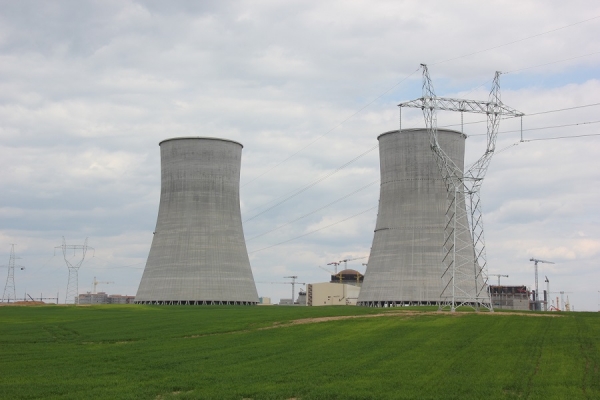
Reactor Vessel in Place
back to contentsThis is one of the most important milestones in the nuclear reactor construction process and a starting point for the installation of core components of the primary circuit. The milestone was passed on the 2nd of December as the reactor vessel was installed in its permanent position. According to ASE (a Rosatom Group company), the installation process was divided in two stages. First, the 330-ton 11-meter long and 4.5-meter wide vessel was lifted with a gantry crane and put on a special flatcar to be transported by rail into the containment. Then the vessel was moved with a polar crane into the central hall of the reactor island and placed on the support ring inside the reactor pit.
“Emplacement of the vessel is one of the most complicated operations in the construction process and requires much attention,” said Vitaly Medyakov, ASE Vice President for Belarus NPP Project. “Since the support ring bears the entire load, the allowable deviation between the axes of the vessel and the ring is just one millimeter.”
The Belarus NPP will have VVER-1200 reactor (VVER is a Russian acronym for ‘pressurized water power reactor’). For now, it is the most powerful Russian-designed reactor featuring high performance, 60 years’ long service life and unparalleled safety.
The Belarus Nuclear Power Plant is based on one of the world’s most advanced designs and complies with the most stringent international regulations and IAEA guidelines. The key advantage of the project design is a combination of active and passive safety systems, with project solutions being fully compliant with post-Fukushima safety standards. In Russia, a reactor unit of the same design is in operation at Novovoronezh.
Earlier, the Nuclear and Radiation Safety Department of the Belarusian Ministry of Emergency Situations published a national report on nuclear safety stress tests carried out at the nuclear power plant constructed near the Belarusian town of Ostrovets (Astravets). The report proves that the Russian-designed plant with Generation 3+ reactors meets the strictest international safety standards. Adopted after the Fukushima disaster in 2011, these standards were designed to maintain safety of nuclear facilities in case of core system failures or external impacts. The report was submitted to the European Nuclear Safety Regulators Group (ENSREG) and European Commission for approval. Belarus drew attention to the fact that stress tests were carried out in accordance with EU standards, and their results were submitted to the European Commission and, under the nuclear safety openness and transparency commitments made by the country, made available for public audience.




